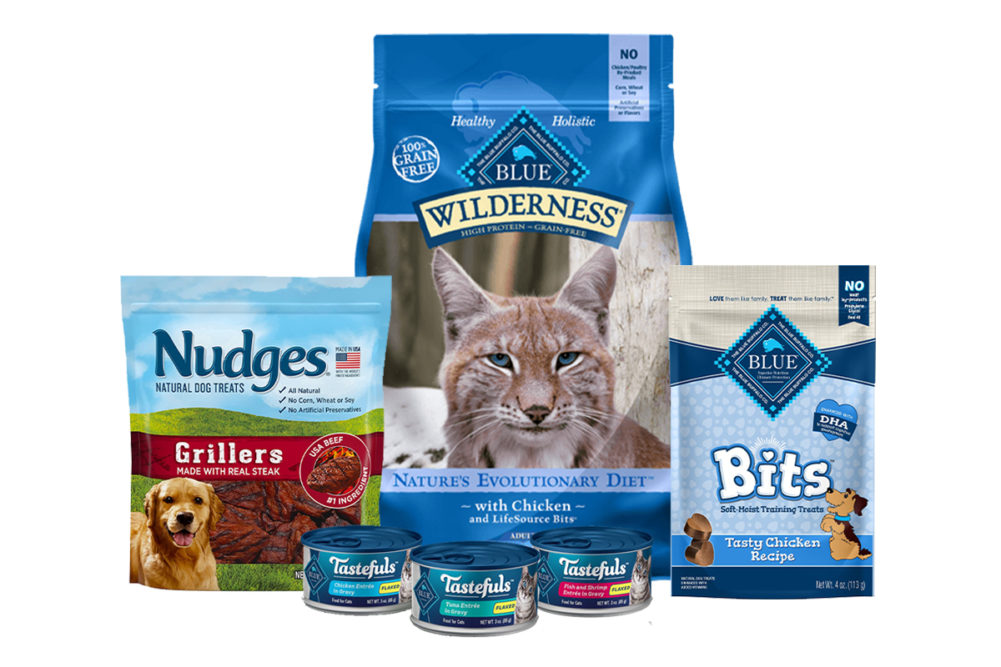MINNEAPOLIS — General Mills’ pet segment financials were up across the board in fiscal 2022, ended May 29, 2022. The segment — which consists of Blue Buffalo, Nudges, True Chews and Top Chews pet food and treat brands — reported favorable net price realization, volume and mix partially offset higher input costs and SG&A expenses. Sales growth was also supported by the company’s acquisition of Tyson’s pet treat brands in July 2021.
This performance follows net sales growth between 20% and 30% in the first, second and third quarters of fiscal 2022, despite continued supply chain volatility, inflation and capacity constraints. Input cost inflation for General Mills hit double digits in the fourth quarter and was estimated at 8% throughout the full fiscal year.
“I’m proud of how our execution outpaced our competition in a highly volatile operating environment,” said Jeff Harmening, chairman and chief executive officer of General Mills, in the company’s earnings call on June 29. “Though significant inflation and supply chain disruptions put pressure on our margins, we responded quickly to address those challenges and keep our brands on shelf for our retail customers and consumers.”
Reported fourth-quarter net sales for the pet segment grew 37% to $610.3 million. Organic net sales were up 22%. Segment operating profit grew 10% to $113.3 million over the quarter and 13% to $470.6 million over the full year.
“Input costs were particularly challenging for the pet segment in the fourth quarter, with inflation reaching the mid-teens and costs of supply chain disruptions increasing significantly,” said Kofi Bruce, chief financial officer at General Mills. “Our service levels on pet were challenged in quarter four, driven by increased supply chain disruptions and capacity limitations that did not allow us to meet the strong growth in demand.”
Full-year net sales were up 30% to $2.3 billion. Organic net sales for the Blue Buffalo brand were up 18% in fiscal 2022. Bruce shared that while capacity constraints stunted the company’s ability to meet underlying demand, Blue Buffalo did gain market share over the year.
To assuage the capacity bottleneck, Harmening noted the company is “prioritizing investments in growth capital” to bolster capacity for key segments, including pet food.
“In the short term, we are working aggressively to improve service, including de-bottlenecking in our owned plant and adding new co-packer capacity, and we’ve recently approved nearly $150 million of new capital to expand capacity in our plants and warehouses, which will begin to come online next year,” Bruce added.
Overall, General Mills reported net sales growth of 8% to $4.9 billion in the fourth quarter, and 5% growth to $19.0 billion over the full fiscal year. Adjusted operating profit was up 21% to $896 million in the fourth quarter and grew 2% to $3.2 billion over the year.
“The relative strength of our supply chain particularly stood out over the past year as we and the industry experienced a record level of disruptions,” Harmening said. “We saw challenges in our upstream suppliers, our internal and co-packer facilities, and our downstream transportation network, all of which were largely driven by labor shortages across the supply chain. Throughout the year we focused on pivoting quickly to respond to ever-changing disruptions.”
The company closed two acquisitions and five divestitures over the last fiscal year as part of its strategy to shift focus to its priority businesses, Harmening said.
General Mills highlighted several sustainable commitments centered around regenerating the planet, improving food security, protecting people and strengthening communities.
“For example, approximately 90% of our packaging is now designed to be recyclable, 40% of our plants have achieved zero waste to landfill, and roughly 90% of our electricity comes from renewable sources,” Harmening said.
For its fiscal 2023 guidance, General Mills expects organic net sales to grow between 4% and 5%. Adjusted operating profit is projected between down 2% and up 1%, and adjusted diluted earnings per share is expected to between flat and up 3%. Harmening noted plans to increase its media investment in fiscal 2023, following a 5% increase in fiscal 2022.
“It is becoming increasingly clear that the environment in fiscal 2023 will remain dynamic,” Harmening said. “We expect a significant step-up in input cost inflation this year, from 8% in fiscal 2022 to approximately 14% in fiscal 2023… We are planning for a moderate reduction in the level of disruptions and supply chain challenges in fiscal 2023, but still expect them to remain significantly higher than historic levels.”
Read more about corporate strategy, financial performance, mergers and acquisitions on our Business page.





